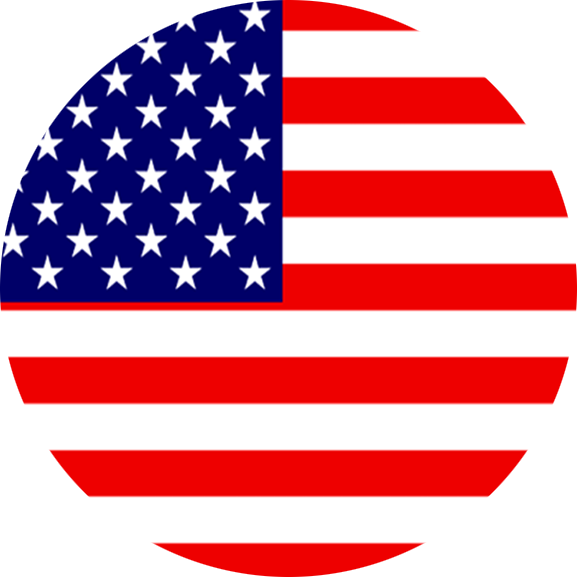Interpretation of OCI Cosmetics New Regulations:
When it comes to the technological change and innovation development of the cosmetics industry, it is undoubtedly that the application of new ingredients is the core key element. Ingredients are the basic unit of cosmetics and the source of its entire life cycle, thus the interventional application and large-scale use of new ingredients will elevate cosmetics to a new level of industry. Cosmetics is a complex mixture made after reasonable dispensing of various raw materials in accordance with a certain formula proportion. Except for some special cases, there is no chemical reaction between the raw materials, which is basically a physical mixing process. The safety and function of ingredients directly affect the safety and performance of finished cosmetic products. As the preparation process is relatively mature at present, the innovation of cosmetics mainly depends on the innovation of new raw materials, especially the development and innovation of functional and new ingredients that contribute to the improvement of cosmetic formulations.
First, new cosmetic ingredients usher in a new opportunity
On June 16, 2020, Premier Li Keqiang of the State Council signed the State Council Order No. 727, promulgating the Regulations on Supervision and Administration of Cosmetics (hereinafter referred to as the new Regulations), which will take effect from January 1, 2021, marking that the legislation and regulatory reform of China's cosmetics has entered a new era. Compared with the old Regulations, there are many changes in the new Regulations. The classified management of new ingredients and the encouragement of technological innovation are undoubtedly the highlights of the new Regulations.
Looking back on the history of the industry, we found that the approval and listing of China's ingredients of cosmetics, especially the new, have experienced a long administrative hibernation. In the past 30 years since the Regulations Concerning the Hygiene Supervision Over Cosmetics (hereinafter referred to as the old Regulations) came into effect on January 1, 1990, China has implemented the registration management of new cosmetic ingredients as a whole. According to the old Regulations, "the use of new cosmetic ingredients for the production of cosmetics should be approved by the health administration department under the State Council." In May 2011, the former China Food and Drug Administration issued the New Cosmetic Ingredient Declaration and Review Guide, which stipulated the safety requirements of new cosmetic ingredients, the requirements of administrative license application materials and the review principles. Due to the lack of classification management, and the evaluation criteria are not refined according to the characteristics of cosmetic ingredients, enterprises often need to supplement information for the new ingredients, even if it is only a macromolecular polymer with no skin permeability or edible and common vegetable oil, so the application of new ingredients should take several years on average, and there are only a few new cosmetic ingredients approved in China. In this long hibernation period, many excellent products have been backlogged for the approval and listing, and the enthusiasm of enterprises have been seriously affected to develop and declare new ingredients. As a result, new ingredients that have been proven to have good performance and are widely used in the world cannot be used in our cosmetics. In particular, some local new ingredients with independent R&D have suffered a long-term severe winter, which has increased the gap between Chinese cosmetics and foreign companies in terms of technological innovation and innovative R&D.
The new Regulations have changed the long-standing difficulty in the approval of new ingredients. Based on the principle of risk management, the supervision mode of new cosmetic ingredients is innovated, and the classification management of cosmetic raw materials, especially new raw materials, is implemented according to the risk degree. Cosmetic ingredients are divided into new ingredients and used ingredients. New cosmetic ingredients with higher risk of anti-corrosion, sun protection, coloring, hair dyeing, spot whitening functions are subject to registration management, which can be used after registration by the drug regulatory sector under the State Council; other new cosmetic ingredients shall be put on record and submitted to the drug regulatory sector under the State Council before use. The filing person of new cosmetic ingredients will complete the filing after submitting the required filing materials through the online government affairs service platform of the drug regulatory sector under the State Council. The list of ingredients prohibited for cosmetics production shall be formulated and published by the drug regulatory sector under the State Council. In addition, the new Regulations set a three-year monitoring period for new ingredients, that is, during the monitoring period, the registrant or filing person of the new ingredients has the right to use the new ingredients and should report the use and security of it to the drug regulatory sector under the State Council every year. For new cosmetic ingredients that have safety problems, the drug regulatory sector under the State Council shall cancel the registration or the filing. New cosmetic ingredients without safety problems after the expiration of 3 years shall be included in the list of used cosmetic ingredients formulated by the drug regulatory sector under the State Council.
The ingredients are the source of the quality, safety and efficacy of cosmetics. The new Regulations established a filing model for new ingredients, simplified registration and filing procedures, and optimized services, which will stimulate market vitality to a large extent and ignite the passion of enterprises to innovate and develop new ingredients, effectively promoting the development of the industry to higher quality. The development of China's new ingredients ushers in the spring of the century.
Second, new cosmetic ingredients lead the industry innovation
In the new Regulations, the cosmetic research and innovation are clearly encouraged and supported. It protects the legitimate rights and interests of units and individuals to conduct research and innovation, and emphasize the encouragement and support of the research and development of cosmetics that combine China's traditional advantage projects and characteristic plant resources. As a highlight of the new Regulations, encouraging innovation is good for the healthy development of the whole industry, and the innovation of ingredients which is the source of cosmetics will undoubtedly become the engine of industry innovation.
Catalogue of Already-used Cosmetic Raw Materials (2015 Edition) of China is the main reference for judging new cosmetic ingredients, which includes 8,783 types of ingredients. Together with the restricted components (50 types), approved preservatives (51 types), sunscreen agents (27 types), colorants (157 types) and hair dyes (75 types) in the Safety and Technical Standards for Cosmetics (2015 Edition), there are only more than 9,000 types of ingredients that enterprises can choose when developing cosmetics. In addition, it is difficult to obtain new ingredients, which restricts the innovation and development of China's cosmetics industry to a certain extent. The former China Food and Drug Administration has translated the names of ingredients included in the International Cosmetic Ingredient Dictionary and Handbook (Twelfth Edition) published by the former Cosmetic, Toiletry and Fragrance Association in 2008. The Chinese Name List of International Cosmetic Ingredients Standards (2010 Edition) has been completed, including 15,649 types of ingredients. On September 7, 2018, the National Medical Products Administration translated the International Cosmetic Ingredient Dictionary and Handbook (Sixteenth Edition) published by the American Personal Care Products Council (formerly the American Cosmetic, Toiletry and Fragrance Association), forming the Chinese Name List of International Cosmetic Ingredients Standards (2018 Edition) (Draft for Comments), which includes 22,620 types of ingredients after openly soliciting opinions from the public. Compared with the types and quantity of cosmetics ingredients used in the world, the scope of it in China has a great space to expand, and the innovative application of new cosmetic ingredients will become the focus of the development of future industry. In the huge system of new cosmetic ingredients, there are certain types of high-risk new ingredients with the functions of anti-corrosion, sun protection, coloring, hair dyeing and spot whitening. Most of the new ingredients are relatively low-risk raw materials that need to have filing management. We can foresee that when the new Regulations are officially implemented, the R&D, application and registration of new cosmetic ingredients will continue to lead the innovation of the industry.
Under the background of implementing the reform of "delegating power, improving regulation and optimizing services", the new Regulations improves the classification management system of cosmetics and its ingredients, and simplifies the registration and filing process. It encourages and supports the research and innovation of cosmetics, and optimizes the institutional environment for innovation of enterprise, creating a good atmosphere and space for the innovative R&D and registration of new cosmetic ingredients.
Third, the new Regulations will be implemented soon, opportunities and challenges coexist.
Is like a spring gale, come up in the night, blowing open the petals of ten thousand pear trees. Are you and your enterprise ready?
Established in 2006, Beijing Oriental Chemical Information Co. Ltd is one of the earliest companies to provide product compliance services. Currently, it is a service unit of120 top 500 companies in the world; regarding the compliance work of new cosmetic ingredients in China, we are a service provider and technical support unit for companies such as Akzo Noble, BASF, KAO, Rohto, INDUCHEM, Siltech, Avon, AZELIS to declare new cosmetic ingredients.
In the past ten years, the technical team of Beijing Oriental Chemical Information Co. Ltd has carried out compliance analysis on more than 3,000 types of new cosmetic ingredients for different excellent Chinese and foreign enterprises; more than 100 technical proposals for preliminary application of products have been drafted, and more than 30 actual application materials for new cosmetic ingredients have been submitted. With the implementation of the new regulations and the finalization of the supporting documents, the spring of compliance and listing of imported and domestic new ingredients has arrived. We will continue to uphold the 5A concept to provide compliance analysis and technical support for the compliance of domestic and foreign cosmetics, especially products with new ingredients.
|
5A Service Commitment of Oriental Chemical Information |
|
High efficiency |
|
Stage transparency |
|
Information security |
|
Risk advisement |
|
Value-added service |





